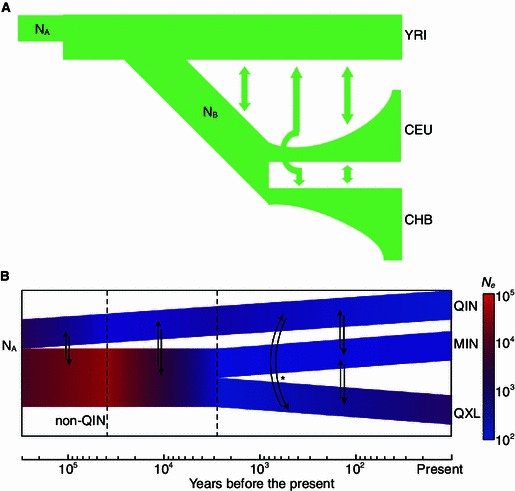Figure 1.

Human and giant panda demographic history inferred by ∂a∂i (See details in Gutenkunst et al. (2009) and Zhao et al. (2013)). Here we focus on the complexity of the two demographic models. Both involve the evolution of three populations (two split from the ancestral population) and changes of the effective population size. (A) The demographic history of three human populations. Population A is the ancestral population whose effective size is shown as NA. Population B is the population out of the Africa with effective size NB. YRI is the Yoruba individuals from Ibadan, Nigeria. CHB means Han Chinese in Beijing, China. CEU means CEPH Utah residents with European ancestries. (B) The demographic history of three giant panda populations. A is the ancestral population with effective size NA. The non-QIN and QIN are divergent populations of population A, and MIN and QXL are divergent populations of non-QIN. QIN and MIN represent the panda population in the Qinling Mountains and Minshan Mountains, respectively. QXL represents a combined population from the Qionglai, Daxiangling, Xiaoxiangling, and Liangshan Mountains. The asterisk in the figure shows the asymmetric migration from QIN to QXL
